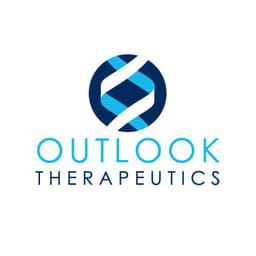Article
Bevacizumab Study Meets Primary, Secondary Endpoints in Wet AMD Population
Author(s):
Outlook Therapeutics anticipates submitting a Biologics License Application to the FDA as early as next year.

Yesterday, Outlook Therapeutics announced findings from the NORSE 2 trial of bevacizumab-vikg (LYTENAVA) for wet age-related macular degeneration (wet AMD), which showed that the ophthalmic solution was associated with high efficacy and safety among patients.
Investigators from the pivotal phase 3 trial enrolled 228 participants across 39 clinical trial sites in the United States. Patients were then treated for a total of 12 months with bevacizumab-vikg monthly or ranibizumab (LUCENTIS)—monthly dosing occurred for the first 3 months, followed by less frequent dosing.
The trial's primary endpoint was the proportion of patients who gained at least 15 letters in best-corrected visual acuity (BCVA) by month 11. The key secondary endpoint was the mean change in the BCVA through 11 months.
Overall, bevacizumab-vikg met both the primary and key secondary endpoint for efficacy. The investigators also observed clinically impactful changes among the bevacizumab-treated patients.
Among the intent-to-treat primary dataset, 41% of patients who were treated with bevacizumab-vikg achieved the primary endpoint, compared to 23% of those treated with ranibizumab (P = .0052).
Further, the primary endpoint was statistically significant and clinically relevant in the secondary per-protocol dataset (P = .04). The percentages of patients achieving the endpoint were 41% and 24% among the bevacizumab- and ranibizumab-treated patients, respectively.
In the intent-to-treat population, the mean change in BCVA at 11 months in the bevacizumab-vikg cohort was 11.2 letters—versus 5.8 letters in the ranibizumab cohort (P = .0043). The means changes in per-protocol dataset were 11.1 and 7.0 letters, respectively (P = .05).
The safety findings were consistent with those reported in the NORSE ONE and NORSE THREE clinical trials. Across all 3 trials, only 1 participant experienced an adverse event of ocular inflammation, which was resolved.
The most common ocular adverse event reported was intravitreal injection-related hemorrhage in the tissues on the surface of the eye. However, this resolved without any sequela.
“We are delighted with the compelling results observed in NORSE TWO, which represent a significant and potentially transformational milepost for patients suffering from wet AMD,” C. Russell Trenary III, President and CEO of Outlook Therapeutics, said in a statement.
“We plan on bringing the first ophthalmic formulation of bevacizumab to market, if approved,” he added.
Outlook Therapeutics plans to submit a Biologics License Application (BLA) to the US Food and Drug Administration (FDA) as early as the first quarter of 2022.




